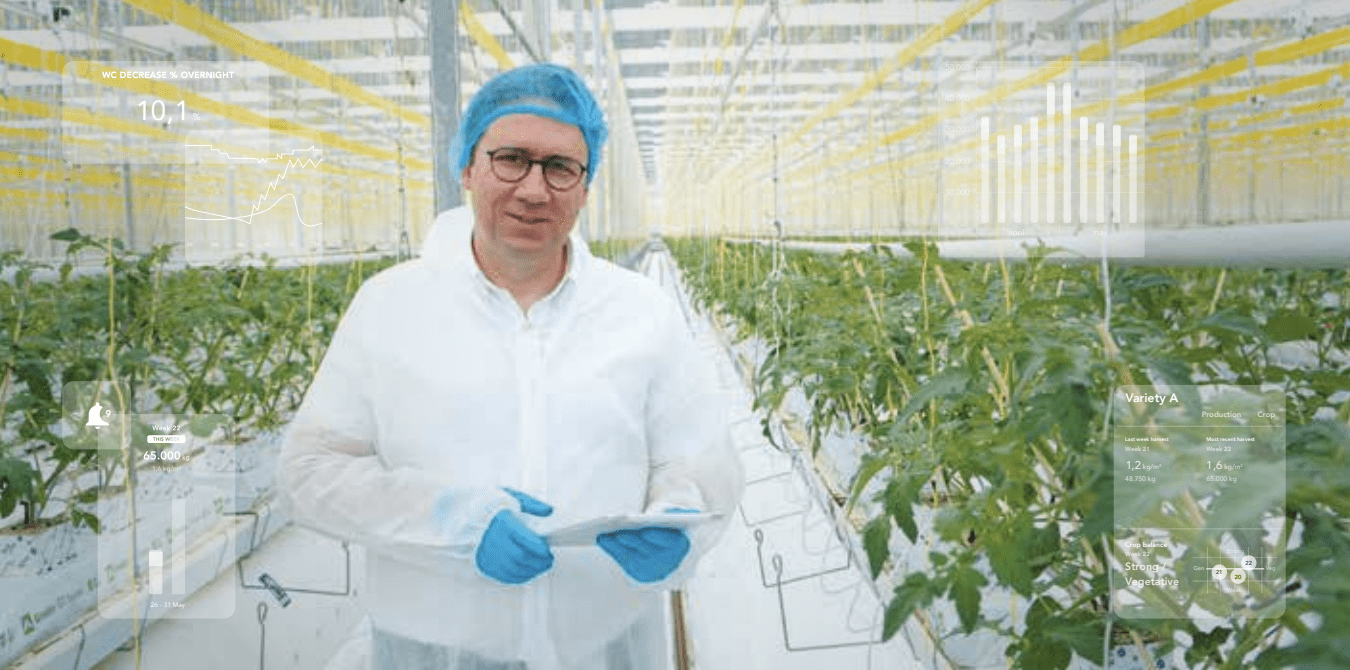
Combining data and plant science



Continue reading Grodan new whitepaper on mineral wool efficiency
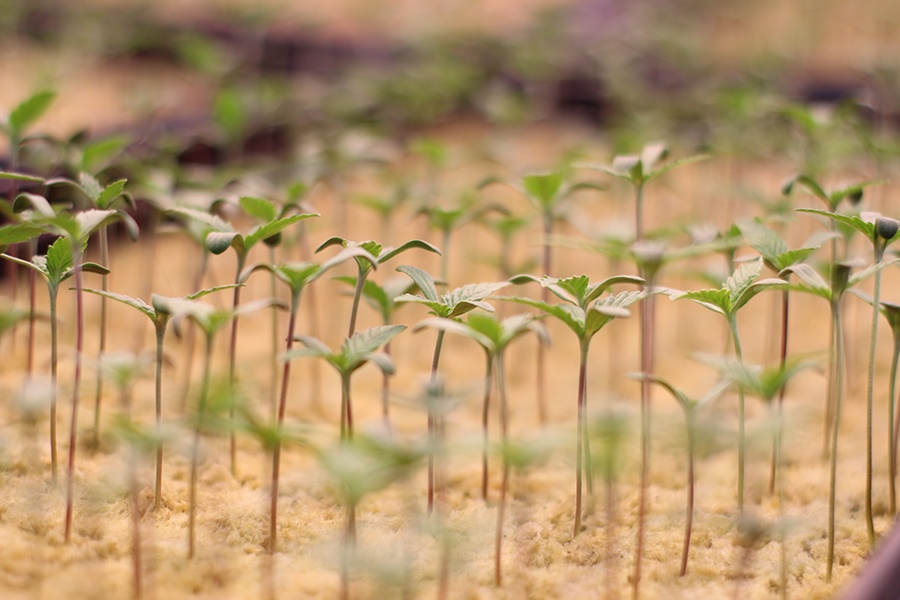
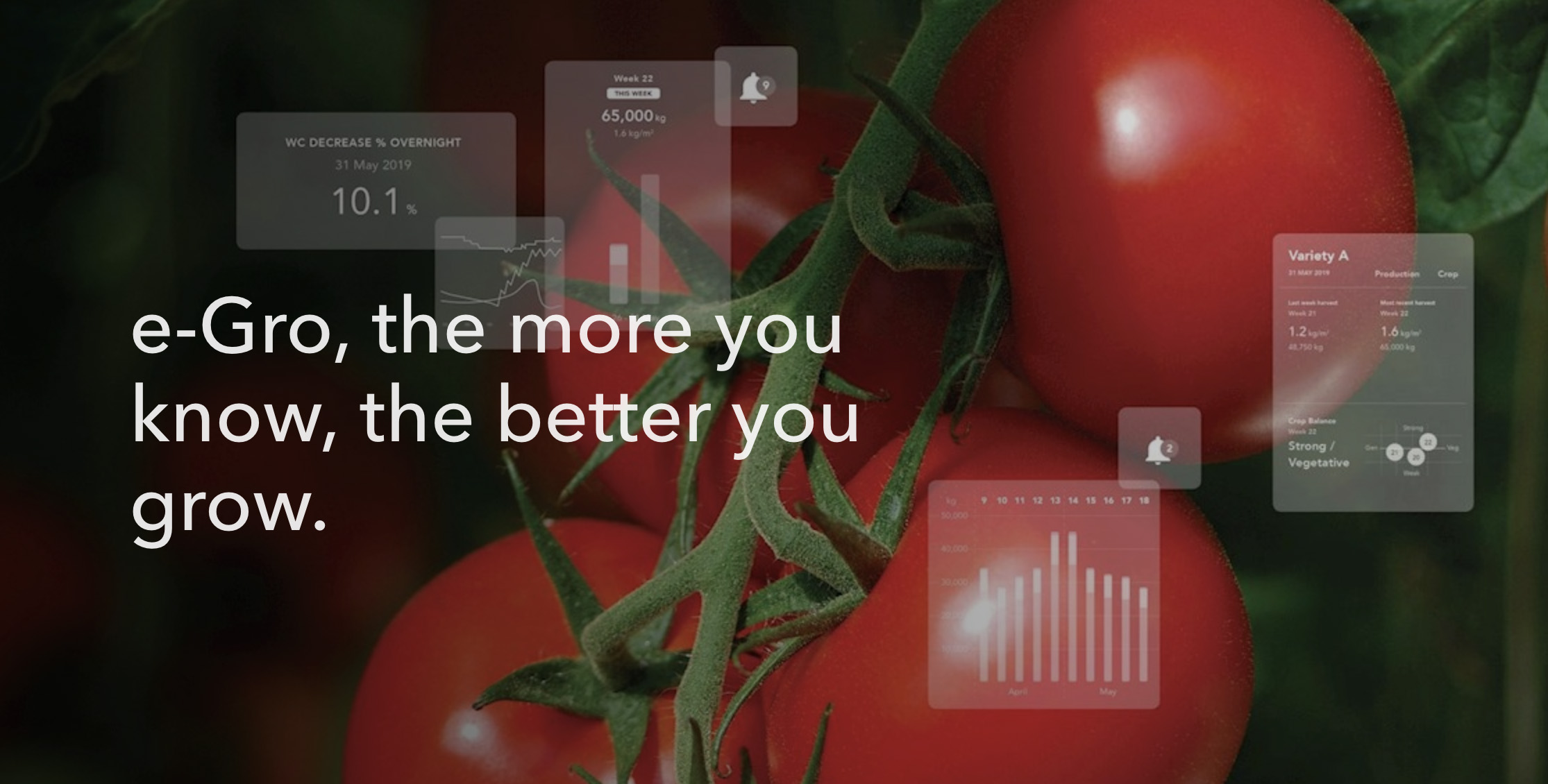
Empowering growers to make data-driven decisions for peak crop performance
Continue reading Grodan launches the award-winning e-Gro software platform in North America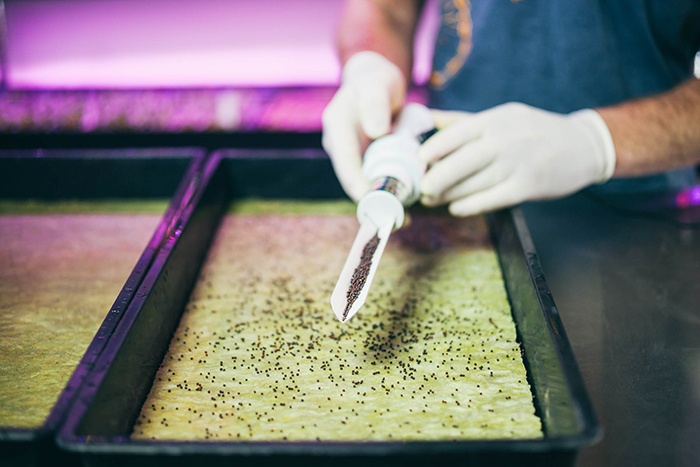
Grodan stone wool substrates are made from basalt rock that is processed at a very high temperature (over 2,900ºF). This hygienic, inert substrate offers vegetable and ornamental plant growers the opportunity to control growth from propagation to harvest.
“Grodan stone wool products are inert,” said Rens Muusers, Grodan Technical Sales Manager for the USA. “This means the grower has full control over what is happening in the substrate. Being inert, Grodan stone wool doesn’t bind nutrients and chemicals like other substrate types may do. Any fertilizers, pesticides or other chemicals, including growth regulators, that are applied to the stone wool are available to plants.

Linked to stone wool’s inert nature, Muusers stated growers have more opportunities to steer their crops.
“Other substrates that aren’t inert may bind elements, pesticides or other chemicals that are applied to enhance plant growth or health,” he said. “This may result in having to apply more of a chemical in order to have the same efficacy. The amount of chemical that will need to be applied to stone wool will be lower and it will be more effective than in non-inert substrates. This also helps growers to minimize their input costs.
“Using methods to control water content and EC (electrical conductivity) levels within the substrate allows growers to influence plant growth.”
Muusers stated by controlling the water content and EC in the stone wool, growers can influence the plant balance between vegetative and generative development.
“The steerability offered by Grodan products can result in earlier production, improved plant, fruit and flower quality and improved plant health,” he said. “All of these benefits result in better resilience to insect pests and disease pathogens.
“Also, stone wool can have a buffering impact on the pH in the nutrient solution, slightly increasing pH in the substrate. This increase is minimal compared to the impact of plant and microbial activity in the root zone on pH.”
Muusers indicated another benefit of using stone wool is crop uniformity.
“Because Grodan stone wool products are manufactured in state-of-the-art facilities with strict standards and quality controls, it is a very uniform substrate,” he said. “Depending on the Grodan product being used, this allows growers to produce very uniform crops. The uniformity of seedlings produced in stone wool plugs results in faster germination and quick crop establishment.
Grodan AO plugs and Grodan AX plugs
Grodan AO and AX stone wool plugs are ideal for starting many crops. The plugs are available in sheets that fit into 1020 trays. AO plugs are connected to each other at the top of the plugs. AX plugs are attached to each other at the bottom of the plugs. Muusers said there are also some options in regards to the seeding hole size as well as with the dimensions of the plugs.
“The properties of the AO plugs are exactly the same as the properties of the AX,” he said. “The only difference is where the plugs are attached to each other.

“AO plugs are ideal for NFT systems with smooth gutter surfaces and also for deep flow systems. Some NFT systems use gutters with grooves on the surface for which growers may prefer the wider base and greater bottom surface area of the AX plugs which may be more stable in these systems.”
Muusers said both plugs are used mainly for leafy greens and culinary herb production. There are also growers who are using them for aquatic plants.
Grodan Cress Plate
The Cress Plate is a fairly new product used primarily for the production of microgreens. It is the thinnest product of Grodan. It is only 1 cm thick, less than ½ inch.
Cress Plates come in two sizes. One size fits into 1020 trays. A larger size is used by some growers who need customized sizes. Growers are able to cut the Cress Plate sheet to the exact size they need.

“The Cress Plate has the same beneficial characteristics as other Grodan products,” Muusers said. “It’s inert, clean and hygienic. It’s a uniform product. It holds water evenly. The Cress Plate also provides quick, easy germination and even development of a microgreen crop.”
Muusers indicated growers use Cress Plates in a couple of ways.
“Some growers sell the microgreens with the Cress Plate, essentially selling a living product,” he said. “This allows the end consumer to use the freshest product longer, something that is valued by customers like restaurants. “Growers who produce baby greens and baby lettuce tend to harvest off of the Cress Plates. By harvesting higher up the plants, the plants continue to grow and produce for several harvests. This multiple harvest method is preferred to the uncommon practice of reusing substrates.”
Muusers stated reusing the Cress Plates is risky, just like reusing any substrate.
“There is the possibility of sterilizing the used substrate with steam or some other technique,” he said. “When a sterilizing technique like steam is used, it can have a negative impact on the properties of the substrate. I wouldn’t recommend harvesting and then resowing on top of a previously used Cress Plate because of the risk with potential disease issues and the potential negative impact on germination and growth.”
Grodan Delta Blocks
Grodan blocks come in different sizes and are ideal for both ornamental and vegetable crops.
“Depending on the crop, once a seedling is germinated in a plug it can be transferred into a block and then transplanted into a finish substrate to be grown on,” Muusers said. “Tomatoes and peppers are usually propagated in plugs and then transplanted into blocks. The final grower purchases the young plants in blocks and transplants them into the final substrate such as Grodan slabs. For cucumbers, which are a relatively quick crop, those are sometimes sown directly into blocks, instead of plugs.”
There are different size blocks for different size crops. A standard block size is 10 cm-by-10 cm-by-6.5 cm, which is referred to as a 4-inch block.

Muusers indicated that some growers put multiple plants into one block depending on the crop.
“For tomatoes, growers are looking for a certain head density per square meter,” he said. “The head density per square meter is sometimes achieved by growing multiple plants or by pinching the plants. Tomatoes are the primary crop that growers plant more than one seedling in a block.”
Muusers stated this method of planting multiple plants is also done with cucumbers and peppers. Another reason a grower sows multiple plants into blocks is to try to save on the cost of the blocks.“Some growers use 6-inch blocks instead of 4-inch blocks and put two plants in them,” he said. “In my opinion, it is always better to put one plant in one block. There is less competition resulting in better seedling uniformity as well as a more uniform crop.”
The blocks, like the plugs, are inert and are steerable. Muusers stated the blocks are also important in regards to irrigation efficiency—how the water content and more particularly, the EC, are refreshed within the substrate.
“Grodan focuses on good root growth and uniform root growth throughout the blocks,” he said. “Also, the blocks need to be able to withstand the rigors of handling during propagation. Their structure must remain stable throughout the growing process to be able to support the plants especially when the blocks are moved around. The blocks won’t break or fall apart.”
Grodan Gro-Slabs
Muusers indicated that Grodan slabs come in different product types developed to meet the challenges and needs of different crops.
“We have different slab types for different applications,” he said. “The slabs differ in fiber orientation and fiber thickness to deliver the kind of functionality a grower is looking for. The Grodan plugs and blocks have the same fiber orientation. They are designed for quick root establishment.”
There are Grodan slabs designed for vegetable crops. These crops are usually short term, less than one year. There are slabs designed for longer horticultural ornamental crops that are grown for longer than a year. The slabs for long term crops, including cut roses and gerbera, have a stronger fiber structure to withstand the longer production period.
“Grodan slabs are very uniform,” Muusers said. “Since the substrate is inert, they offer a high degree of crop steerability. This offers a lot of options for irrigation strategies combined with the substrate to influence plant development in a vegetative or generative way.”
David Kuack is a freelance technical writer in Fort Worth, Texas; dkuack@gmail.com.
Next Generation 2.0 (NG2.0) is the latest substrate technology from GRODAN. This technology enables propagators and growers to produce more while using less water, nutrients and space. It creates optimal growing conditions for a whole season, and allows roots to make better use of the entire substrate. NG2.0 is available in plugs, blocks and slabs to help growers and propagators produce sustainable, healthy fresh produce for a growing population.
The growing world population means the demand for sustainably produced and healthy fresh produce is continuing to increase. The greatest challenge facing growers is creating the ideal conditions for growth: not just for a few weeks, but all year round. Precision Growing plays a vital role in this respect. It gives growers the opportunity to produce more using less water and nutrients.
GRODAN introduced Next Generation Technology in 2007. Its introduction already signaled a giant leap forwards in crop management, plant steering and root development. NG2.0 is an exciting continuation of this technology that has been extensively trialed in practical situations over the past years. The response to NG2.0 is extremely positive. NG2.0 is the next step in Precision Growing (see video below).
NG2.0 adds new benefits to those already offered by Next Generation Technology. Water distribution is even more uniform and even better utilization of the entire substrate volume by the crop is ensured.
Continual new growth of roots in both the block and the slab results in a healthier and more vigorous crop throughout the whole growing season. These benefits translate to higher yields, improved fruit quality and reduce the sensitivity of the crop to diseases. NG2.0 creates the perfect substrate for growers and propagators of plants.
Beginning in 2016, GRODAN will implement NG2.0 starting in the Netherlands in a phased in approach.
Future launches of NG2.0 will occur in other markets in Europe and North America. For more information on your specific area, please contact GRODAN (see below).
The GRODAN Group supplies innovative, sustainable stone wool substrate solutions for the professional horticultural sector based on Precision Growing principles. These solutions are used in the cultivation of vegetables and flowers, such as tomatoes, cucumbers, sweet peppers, eggplants, roses and gerberas.
The Group offers stone wool substrates together with tailor-made advice and tools to support Precision Growing, facilitating the sustainable production of healthy, safe, and tasty fresh produce for consumers.
Sustainability plays a prominent role at GRODAN, from the production of stone wool substrates to end-of-life solutions.
Founded in 1969, the GRODAN Group is active in more than sixty countries worldwide. The Group’s head office is in Roermond, the Netherlands.
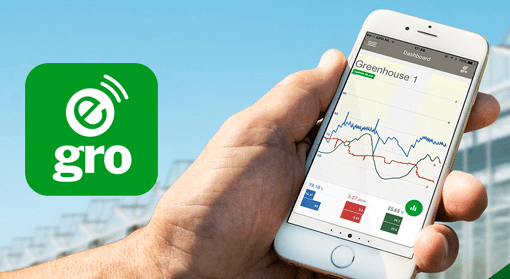
Smart app signals new era in Precision Growing for GRODAN customers
ROERMOND, the Netherlands, − GRODAN, a global leader in stone wool substrate solutions introduces e-Gro: an easy to use, mobile app that gives real-time substrate information. e-Gro is a new service from GRODAN developed to support customers with a GroSens® MultiSensor system. Customers who need to have real-time reporting on their substrate, now have the opportunity to link their GroSens system to the e-Gro app. This new mobile and desktop application provides growers the possibility to get the maximum out of their substrate. It’s easy to use and very accurate. e-Gro is the perfect platform for professional growers interested in expanding their possibilities and keeping control of their growing in real-time. Making Precision Growing accessible from anywhere.

With the introduction of the GroSens MultiSensor system in 2013, GRODAN took the first step to enable Precision Growing by offering a tool that gave professional growers highly accurate and reliable insights into the root zone. “With technology continuously playing a more important role, we recognized the need to add a new, smart dimension to the system to service our customers 24/7 anywhere in the world regarding their irrigation strategy” explains Hub Janssen, Managing Director at GRODAN. “With e-Gro, root zone management is no longer a one-way-traffic activity, it becomes individual, easy to access and intelligent. And this is only the beginning, as we will continuously expand features and functionalities of the app over time. e-Gro is a great new service for our customers”.
What are the benefits of e-Gro?
e-Gro is available in combination with GRODAN slabs and the GroSens MultiSensor system. The app can be downloaded for free and is available in the Google Play (Android) and App Store (iOS) and can be accessed via smartphone, tablet or desktop. To find out more about e-Gro, visit www.grodan.com/e-gro
About the GRODAN Group
 The GRODAN Group supplies innovative, sustainable stone wool substrate solutions for the professional horticultural sector based on Precision Growing principles. These solutions are used in the cultivation of vegetables and flowers, such as tomatoes, cucumbers, sweet peppers, aubergines, roses and gerberas. The Group offers stone wool substrates together with tailor-made advice and tools to support Precision Growing, facilitating the sustainable production of healthy, safe, and tasty fresh produce for consumers. Sustainability plays a prominent role at GRODAN, from the production of stone wool substrates to end-of-life solutions.
The GRODAN Group supplies innovative, sustainable stone wool substrate solutions for the professional horticultural sector based on Precision Growing principles. These solutions are used in the cultivation of vegetables and flowers, such as tomatoes, cucumbers, sweet peppers, aubergines, roses and gerberas. The Group offers stone wool substrates together with tailor-made advice and tools to support Precision Growing, facilitating the sustainable production of healthy, safe, and tasty fresh produce for consumers. Sustainability plays a prominent role at GRODAN, from the production of stone wool substrates to end-of-life solutions.
Founded in 1969, the GRODAN Group is active in more than sixty countries worldwide. The Group’s head office is in Roermond, the Netherlands.
For more information and images:
Stefanie Wienhoven, Corporate Communications Manager
Tel: + 31 (0) 475 – 353481
email: stefanie.wienhoven@grodan.com

As a commercial hydroponic grower, it is important to be able to promote the production of high quality vegetables, grown in a clean and sustainable environment. Produced from pure basalt rock, Grodan’s Stone Wool Substrate (also commonly known as Rockwool) is of the highest of grades, promoting uniform wetting and providing excellent drainage. Grodan’s proprietary binder and wetting agent insure more uniform water dispersion and water holding, which leads to better root development throughout the entire substrate. Control of water and nutrients is very important to commercial growers to achieve maximum yields. Take control with Grodan Substrates today!

Grodan provides precision growing with a substrate that is inert and will not bind nutrients inhibiting a uniform crop development and a primary focus on the root zone. Further, steer-ability (controlling water content and electrical conductivity), irrigation efficiency and production optimization are all pillars of Grodan substrates.
Hort Americas is an innovative leader in North America’s controlled environment agriculture industry (CEA) and strives to continually innovate in agriculture via premium technical support, professional salesmanship, unmatched customer service and outstanding products to our customers in the United States, Canada, Mexico, and the Caribbean.
For questions, support or to purchase → Click Here!

The most important thing when using Grodan stone wool is that you need to saturate the product fully before using it. When you don’t fully saturate it, some of the stone wool can stay dry and will be hard to get wet at a later stage (hydrophobic). A way to check if the product is fully saturated is to weigh the product and it should be above a certain weight. As an example a Grodan Delta DM6G Grow Block of 10 x 10 x 6.5 cm (4” x 4” x 2.5”) has a volume of 650 ml, so in theory if it is completely filled with water it should weigh 650 grams. However, there will always be air in the Grodan rock wool so we take a water content (WC) of about 85% after initial saturation, meaning the Grow Block should be approximately 550 grams or slightly greater.
I recommend using nutrient solution at 5.5 pH when saturating the product so that nutrients are immediately available for the plant. For the germination itself nutrients are not needed, so some people saturate the plugs with just water and then add the nutrient solution immediately following germination. However, fairly quickly after germination nutrients are needed for further development. So to sure it is easier to saturate the plugs with nutrient solution. Most growers use 1/2 rate nutrient solution for starting then full rate at transplant.
Below are characteristics of some of the most common types of Grodan used in hydroponic production.
AO cubes are recommended for lettuce, herbs, and other greens in a raft system as the tapered base makes it easier to fit into the raft faster.

AO 25/40 mm (0.98 x 1.58 in)
L25 x W25 x H40 mm
200 (20 x 10) cubes per pad
 6,000 cubes per case
6,000 cubes per case
30 pads per case
Top = 25 mm
Bottom = 19 mm
Height = 40 mm
Hole = 10 x 10 mm
Weight dry (1 cube) = 2 g
Weight saturated (1 cube) = 18 g
Also available: AO 36/40 = 1.5 in; 98 cubes/pad; 2,940 cubes/case
AO 50/40 = 2 in; 50 cubes/pad; 1,500/case
AX cubes are recommended for lettuce, herbs, and other greens in a NFT system as the wider base gives the plug more stability in the gutter.

AX 25/40 mm (0.98 x 1.58 in)
L25 x W25 x H40 mm
200 (20 x 10) cubes per pad
 6,000 cubes per case
6,000 cubes per case
30 pads per case
Top = 19 mm
Bottom = 25 mm
Height = 40 mm
Hole = 8 mm (1/4”)
# per pad 200 (20 x 10)
Weight dry = 2 g
Weight saturated = 18 g


Kiem Plugs in French Trays
# per tray = 240 (12 x 20)
Height = 2.1 cm
Dry weight = 1 g
Kiem Plugs
Height = 27 mm
Diameter: 20 & 22 mm
Weight dry = 1 g
Weight saturated = 9 g

DM4G
7.5 x 7.5 x 6.4 cm (3 x 3 x 2.5 in)
Weight dry = 25.3 g each
Weight saturated = 273 g each
Volume = 368.7 cubic centimeters
85% WC = 313.4 g

DM6G
10.2 x 10.2 x 6.4 cm (4 x 4 x 2 1/2 in)
hole = 1.5/1.6 in (36/40 mm)
Weight dry = 45.6 g each
Weight saturated = 494 g each
Volume = 655.5 cubic centimeters
85% WC = 557.2 g

DM9G
15 x 10 x 6.5 cm (6 x 4 x 2.5 in)
two holes
Weight dry = 67-73 g
Weight saturated = 879 g
Volume = 975 cubic centimeters
WC 85% = 828.8 g

Grotop Expert
100 x 20 x 7.5 cm (39.4 x 7.9 x 3 in)
(99 x 19 x 7.8 cm)
Weight dry = 753 g

Grodan Block Delta DM9G 27 x35 top right (144/case)
Grodan Block Delta DM6G 20×15 1 hole
Grodan Block Delta DM6G 27×35 2 hole
Grodan Block Delta DM4G 20×15 (384/case)
Grodan Block Delta DM4G 27×35
Grodan Cube AO 36×40 15/15 hole
Grodan Cube AO 36×40 10/10 hole

|
Table 1. Indicative weights to irrigate the
blocks or AO sheets. |
||
|
Grodan product
|
Approximate substrate volume
|
Indicative weight to base irrigation on (±60% WC)
|
|
MM 40/40
|
64 ml per block
|
40 gram per block
|
|
AO 36/40
|
40 ml per plug
3926ml per sheet
|
24 gram per plug
2.4 kg per sheet
|
For more information
contact Hort Americas at 469-532-2383 or customerservice@hortamericas.com
Visit our corporate website at https://hortamericas.com
Tim Blank and our friends at Future Growing, LLC have done it again! Check out this amazing project they did with the city of Chicago and the Ohare Airport.
Completed in September, we wanted to wait till we had a chance to visit it. So check out the video and then the photos from our visit.
 |
| Urban Agriculture and Hydroponics |
 |
| From Leafy Greens to Herbs to Veggies and Edible Flowers |
 |
| Farming of the Future |
Please email us with any additional questions on this project or other hydroponic projects around the world.
Visit our corporate website at https://hortamericas.com
You must be logged in to post a comment.